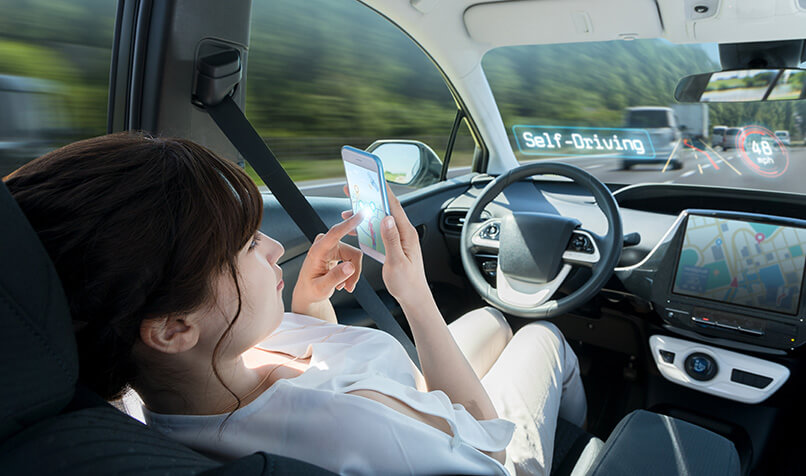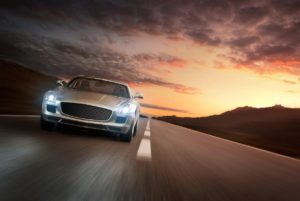Let the record show that I think the idea of driverless cars is very cool. Simply program your destination via the car’s onboard tablet, or even from your mobile phone, and whoosh… off you go. You could be sitting in the back seat, gin and tonic in hand, leaving the car’s computers to do all the driving for you. Sounds idyllic, no? Sure does, but I hate to say it folks… it ain’t gonna happen anytime soon, and maybe never.
Driver assistance technologies are in abundance: self-parking, lane departure warning systems and adaptive cruise control are just some of the options that can be found in a whole range of cars for sale today. But in addition to these we also have various levels of autonomous driving systems (aka driverless, self-driving, or my personal fav, look Ma, no hands!) in Teslas, Volvos, VWs and Fords (Level 2) while Uber and Google spin-off Waymo have been testing more advanced (Level 3) systems to be used in taxis. But the available systems in Tesla’s et al still require a driver to keep their hands “loosely” on the wheel, while Uber and Waymo are (still) testing with a safety driver sitting behind the wheel. While driverless vehicles have yet to become legal anywhere in the world, it is hoped by many – today’s younger, driving licence-less, generation in particular – that it’s only a matter of time before they are. But will they?
Before we jump into whether driverless cars will ever be fully accepted, let’s look at a couple of examples where autonomous operation already exists. Naturally we should start in aviation where the first autopilot was introduced in, hold on to your crash helmets, 1912! It was developed because flight distances were getting longer leading to potential pilot fatigue. Autopilot systems have advanced considerably since the first commercial passenger and airmail flights in 1931 and are now used in almost all phases of a flight – taxi, take-off, climb, cruise, descent, approach and landing. However, a pilot and co-pilot are still physically present in the cockpit and can take control when needed.
Like aviation, auto-pilot systems in large marine ships have been around since the 1920’s and today use a combination of electric or electronic navigation tools that steer a vessel without continual hands-on involvement. It can be synched with chart systems making constant steering changes unnecessary. Yet issues with marine auto-pilot systems are varied: rough seas can lead to adverse effects of the performance of the system while auto-pilots at slower speeds can be, perhaps remarkably, less precise than a captain manning the wheel. Like an airplane cockpit, a captain and crew are still physically present on the bridge and can take control when needed.
So how does this leave us in the discussion of driverless cars? As previously mentioned, no one is under any illusion that having the option to select a self-drive mode carries a lot of appeal. But the reality is that if we have yet to see completely un-manned commercial flights or marine voyages – both of which have had autopilot systems in place for a hundred years (!) – then how can we expect driverless cars to ever gain acceptance, be it from a regulatory perspective or societal perspective? Anecdotally, while perusing Netflix I came across “Sully – Miracle on the Hudson”, a true story starring Tom Hanks. Despite the success of veteran pilot Capt. Chesley “Sully” Sullenberger’s audacious landing of an Airbus A380 on the Hudson River in New York, Sully is accused in the aftermath by airline safety investigators of having put all 155 passengers and crew at risk for choosing to land on water rather than divert to La Guardia. Computer simulators revealed that he could’ve made it to the nearby airport. However, the simulators were later deemed unrealistic because they did not reflect or account for “real-world considerations”, chiefly the time it took to assess all parameters and options before making the decision to land on water.
It is this point specifically that gives the most doubt for the acceptance of driverless cars – can real-world considerations ever be fully captured by computer systems? Alas there are now several examples of self-driving vehicles getting into accidents (in some cases leading to fatalities) that could’ve been avoided had a human been in control of the vehicle. Similarly, there are various accounts of people witnessing Waymo test-vehicles struggle with left turns (in the US), and merging with traffic. On this last example, driverless cars appear incapable of nudging gently, yet persistently, into another lane like a human would. They rely instead on a complete break in traffic before executing a merge or lane change. Witnesses have seen driverless vehicles wait up to a minute and a half before executing such a manoeuvre! You might as well get out of your driverless taxi and catch the next bus. Further, surely the success of driverless cars on the world’s roadways must be based on every car on the road being driverless too? This would remove the possibility of any human “override” that would interfere with other autonomous systems sharing the road with you. But most damning of all? Waymo CEO John Krafcik publicly announcing last November that fully autonomous (Level 5) driving might never exist as vehicle sensors don’t work properly in rainy or snowy conditions. Ouch.
Today, autopilot systems continue to advance but the industries in which they are most commonly used (aviation, marine and now automobiles) are split as to whether we’ll ever see completely unmanned operation. The consensus is that we’ll likely see continual improvements in information gathering to help in the area of maintenance. Citing airplane and marine auto-pilot systems that still require humans on standby to take control when needed, coupled with major shortcomings in the technology in driverless cars, people waiting for the day when they can sit back holding a gin and tonic will find that the only thing they’ll be holding for the considerable future is… the steering wheel.




